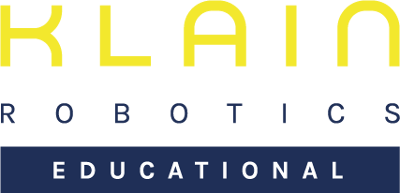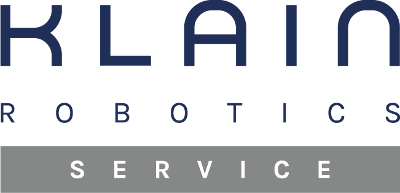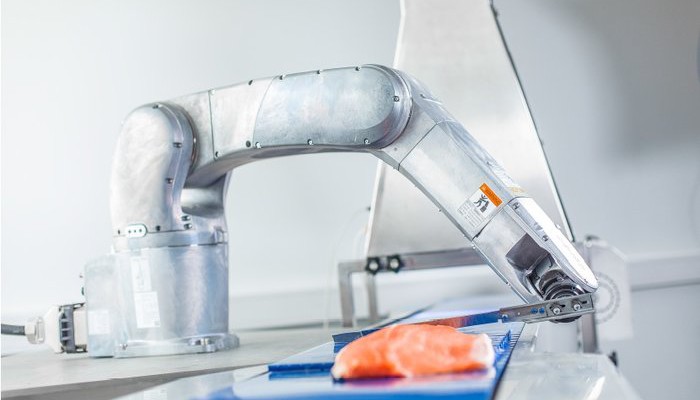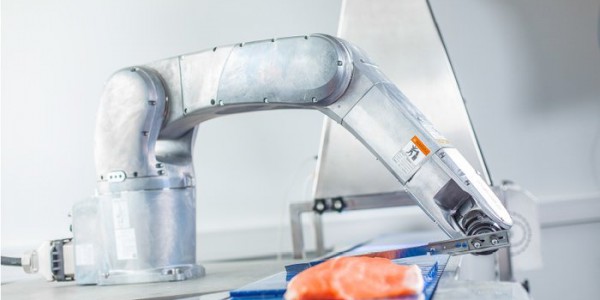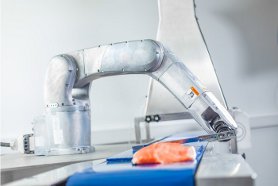Company: SINTEF
Industry: Fishing
DENSO Products Used: VS-087
Company Location: Norway
Website: http://www.sintef.no
PROBLEM
The processing of fish and meat is subject to strict regulations: The production process has to be completely hygienic. It must be possible to track the origin of every product. Fish and meat have to have a consistent quality.
SOLUTION
The research company SINTEF from the Norwegian city of Trondheim is currently working to automate and optimize the way these foods are processed. For the processing, SINTEF uses the highly efficient six-axis robot of the model VS-087 produced by DENSO Robotics. With over 2200 employees SINTEF is one of Norway’s biggest research facilities.
“Our robot fillets the fish and operates the cutting blades”, Lars Wirenfeldt, Sales Manager of DENSO Robotics in Scandinavia, explains. The fish is measured with the help of sensors, so it can then be analyzed at which exact points the blade has to cut around the skin and the bones. Another advantage for the consumer is that unwanted bloody spots can be identified by the sensors and can be removed by the robot. The use of robots ensures that the weight and shape of the filets is close to identical when they go into sale. The process is also intended for portioning chicken breasts.
Demanding work environment
“The biggest challenge when processing fish and meat is that all pieces are different but are still supposed to look identical when they go into sale”, Harry Westavik, Research Manager for automation and product efficiency at SINTEF, says. But the processing of fish and meat is a difficult field to operate in. Westavik: “The work environment is cold and yet very wet, which is corrosive to all objects made of metal. DENSO robots are very robust and operate extremely fast. This is why we have chosen one.”
RESULT
The robot from DENSO not only complies with the IP67 standard, but is also completely washable with water. The robot also has internal wiring and is connected through the bottom, which reduces possible points of contact for bacteria and other microbes. The robots aluminum design was also chosen for reasons of hygiene and to weather outside influences.
Until now the job of separating the bones from the filets was done by hand, which was very time intensive and prone to errors. Furthermore, a lot of the fish was lost. The process that is now being developed by SINTEF will be based on several robots, which will take over the entire production chain in the processing of fish and meat. This includes grabbing the pieces with the help of sensors, the relaying on conveyor belts, the filleting and the packaging. ”Robots can be in use around the clock every day” Westavik describes the advantages towards manual production.
Automating the processing procedures can also be profitable for food companies: The production process becomes more hygienic and safer. The quality of the fish and meat is increased because only high quality cuts make it into sale. Additionally, the origin of the products and every single step in the production process is traceable. This increases the chances for the consumer not to receive contaminated meat or fish.
Movie available here: https://youtu.be/uAyJlOLtfGA
